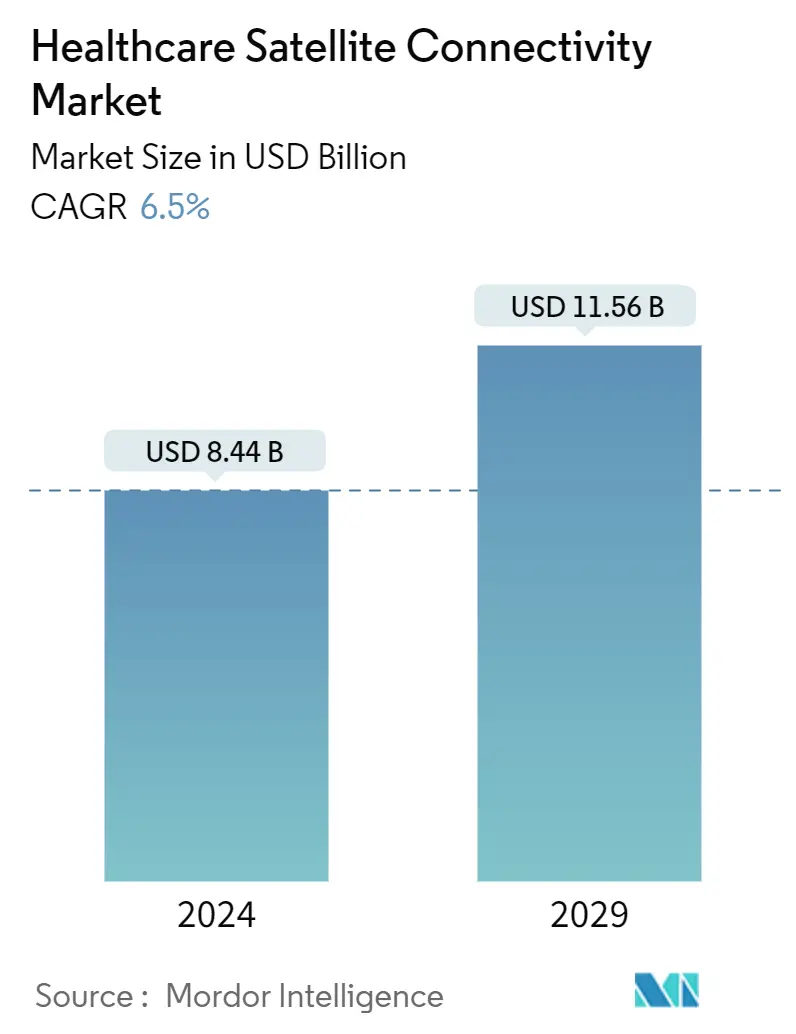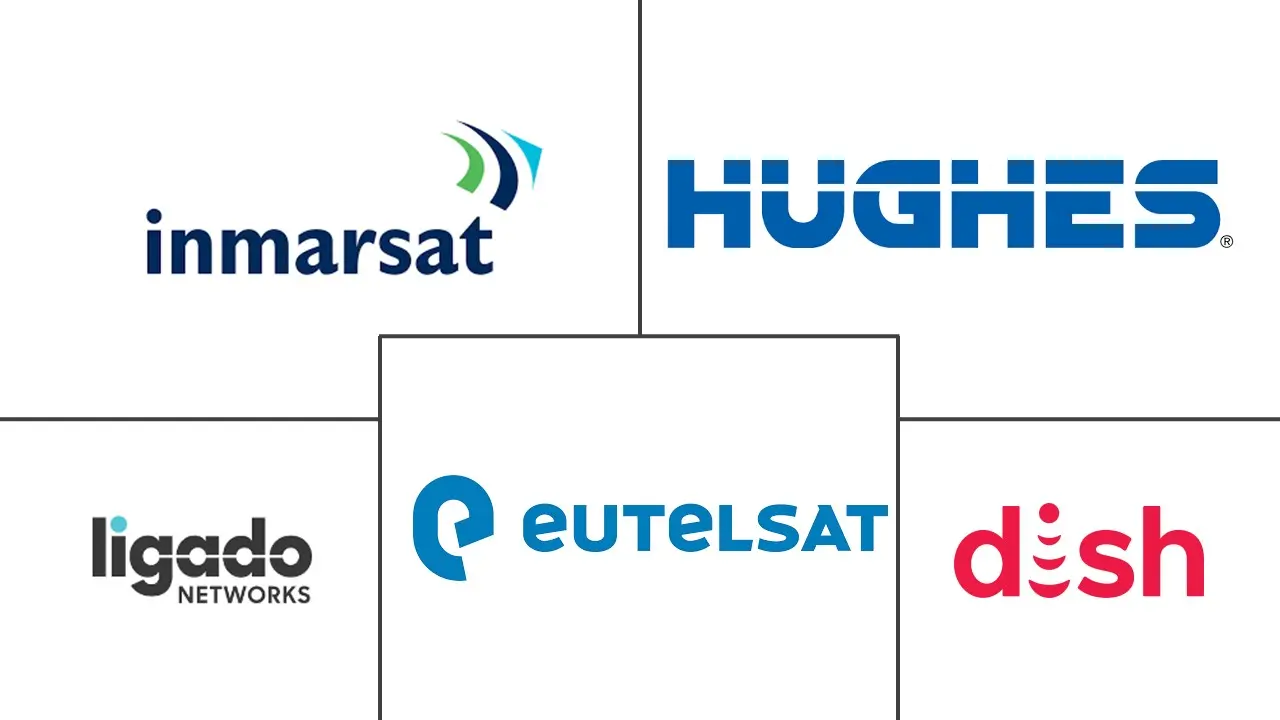Market Size of Healthcare Satellite Connectivity Industry

| Study Period | 2019 - 2029 |
| Market Size (2024) | USD 8.44 Billion |
| Market Size (2029) | USD 11.56 Billion |
| CAGR (2024 - 2029) | 6.50 % |
| Fastest Growing Market | Asia-Pacific |
| Largest Market | North America |
Major Players
*Disclaimer: Major Players sorted in no particular order |
Need a report that reflects how COVID-19 has impacted this market and its growth?
Healthcare Satellite Connectivity Market Analysis
The Healthcare Satellite Connectivity Market size is estimated at USD 8.44 billion in 2024, and is expected to reach USD 11.56 billion by 2029, growing at a CAGR of 6.5% during the forecast period (2024-2029).
The COVID-19 pandemic significantly impacted various industries worldwide, including the healthcare and satellite connectivity markets. The pandemic acted as a catalyst for adopting and developing satellite connectivity solutions in the healthcare sector. The increased reliance on telemedicine, improved connectivity infrastructure, remote resource management, data exchange, and investment in satellite healthcare solutions have transformed the healthcare satellite connectivity market and are likely to have long-lasting effects beyond the pandemic. The need for remote healthcare services has surged with lockdowns, social distancing measures, and overwhelmed healthcare systems. Telemedicine, which relies on satellite connectivity to provide remote consultations and monitoring, has experienced a sharp rise in demand during the pandemic. Healthcare providers have increasingly turned to satellite technology to bridge the gap between patients and doctors, enabling virtual consultations, remote diagnostics, and patient monitoring. For instance, as per the article published by BioMed Central Ltd in September 2022, telemedicine has increased substantially, particularly for hospital-based in-patient services and in private clinics and ambulatory settings since the onset of the COVID-19 pandemic. Furthermore, as per the article published by Cureus in March 2023, patients sought telemedicine as advantageous and appropriate for providing healthcare services during the COVID-19 pandemic. As per the same source, the patients are more willing to try telemedicine, resulting in higher acceptability during the post-pandemic period. Therefore, looking at the overall scenario, the pandemic has increased the adoption of telemedicine healthcare satellite connectivity services and is expected to do the same during the forecast period.
The major factors responsible for the high market growth include rising healthcare expenditure toward developing eHealth, telemedicine, telehealth, and other mHealth solutions and increasing government initiatives for promoting and developing satellite connectivity.
In addition, the rising adoption of AI in telemedicine to improve patient healthcare outcomes is also projected to drive market growth during the forecast period. For instance, as per the article published by the Arizona Telemedicine Program in June 2022, in the recent few years, there has been an increase in the adoption of AI in telemedicine to allow doctors to make more data-driven, real-time decisions for the improvement of the health outcomes and patient experience by enabling them to work more toward virtual care alternatives throughout the care continuum. Therefore, with AI-integrated telemedicine, doctors and patients can communicate remotely via satellite internet for consultations, diagnoses, and distance surgeries, thereby increasing the market growth.
Furthermore, the rising government initiatives toward adopting healthcare satellite connectivity in healthcare are also projected to drive market growth during the forecast period. For instance, in March 2021, the Satellite telecommunications company and Luxembourg Government launched the second phase of the SATMED telemedicine project in 2024. SATMED is enabled by satellite and is designed to connect doctors and nurses from remote locations to the outside medical world, providing access to the platform's cloud applications for e-training, virtual consultations, management and storage of medical data records, and video conferencing.
Moreover, the rising product launches by prominent players are also burgeoning the market growth. For instance, in January 2023, Senet and Telli Health launched the first remote patient monitoring (RPM) hardware powered by LoRaWAN technology. LoRaWAN is an open protocol for designing low-power. These wide-area wireless telecommunication networks will allow providers to reach more patients in remote and underserved areas like indigenous communities worldwide, boosting healthcare equity and inclusivity.
Therefore, the rising adoption of AI-integrated telemedicine, various government initiatives, and an increasing number of product launches are projected to augment healthcare satellite connectivity market growth during the forecast period. However, bandwidth problems and low penetration of internet services in remote areas are expected to restrain the development of the studied market.
